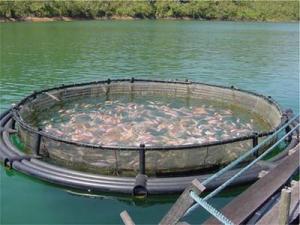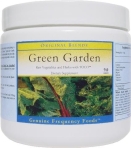Posts filed under ‘nutrition’
Is Fish or a Can of Tuna REALLY THAT Bad for You? Your Kids?
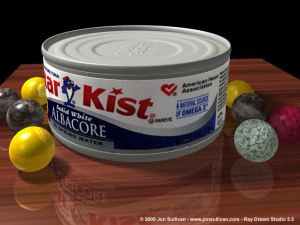
If you are a 140 lb woman eating 1 6 oz can of Albacore Tuna = you are getting 140% of the EPA limit of Mercury exposure! For a 65 lb. child eating 3 oz. = 150% of the EPA limit of ‘safe’ mercury exposure.
In other words, there is way too much mercury to consider it “SAFE” to eat in my opinion. (Which sucks because I love tuna. And so does my daughter – which was something different to give her besides the daily PB & J.)
So about 4 years ago when I got into eating ‘organic’ & ‘healthy’ foods – I quit buying tuna and most foods from the typical grocery store. I am delighted to see that a lot of stores these days at least have a small section with organic choices, although I look forward to a time when that is how most food is sold!
At first, I thought the can of Tuna on the shelf in the ‘healthy’ whole food store must be OK, Right?
It made me wonder what the difference was. So I did a little searching online.
My first great discovery – a website called GOT MERCURY? – (very cute.. ) It has a ‘Mercury Calculator‘ so you can put in your weight and the type of fish (even differentiating between albacore, yellow fin, and light tuna) to find what your mercury exposure is.

 There is even an ‘Advanced Calculator’ for people who consume more than 1 serving a week! Brace yourself – you will be shocked at how much mercury you may be consuming!
There is even an ‘Advanced Calculator’ for people who consume more than 1 serving a week! Brace yourself – you will be shocked at how much mercury you may be consuming!
Here is what I found for myself and the fish I like –
- Tilapia – 0%
- Salmon – 0%
- Scallop – 20%
- Flounder – 20%
- Crab/Shrimp – 20%
- Cod – 30%
- Light Tuna – 50%
Now the NOT so good list – (I ate occasionally and will now be avoiding!)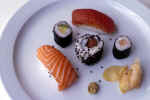
- Mahi Mahi – 60%
- Halibut – 90%
- Lobster – 110%
- Yellow fin Tuna – 120%
- Albacore Tuna – 130%
- Orange Roughy – 200%
I did find this interesting the sight about Tuna –
For some reason – I always thought Albacore was the good one to get – wow was I wrong!
Then I found in a Dr. Mercola article – that Mercury is NOT the only worry–
Other Contaminants include:
Think that Farm Raised means cleaner healthier fish? Think again!
Unfortunately, my fish consumption is rare because of this information which is a shame because it is so good!
I didn’t realize how unhealthy Tuna was so I wanted to share what I’d learned. We all hear that our oceans are contaminated but I was shocked at how badly.
Why this continues to happen? Another blog….
To Your Health!
Money Is Tight so What Fruits & Veggies Should I Buy Organic & Which Can I Buy Conventionally Grown?

In today’s economy you may be feeling the pinch. Even if you aren’t, you may be more aware of how much you are spending. Either that is what is happening to me, or food prices just continue to climb! Probably both.
But I am a believer in eating organically. It is a fact that organically grown food has a higher vitamin/mineral content than conventionally grown produce.
Besides that I prefer to eat my fruits & veggies without all the pesticides and insecticides that conventionally grown produce offers you. If you want to know why it is better to NOT consume these dangerous chemicals – that is a whole other blog!
So what to do when my shopping list is bigger than my budget and I’m out of coupons? Buy some stuff that isn’t organic. It doesn’t thrill me but sometimes you gotta do what you gotta do.
What then is the ‘must have’ organic produce? Which are OK to buy non-organic?
Announcing a new update to an old favorite: it’s the 5th edition of EWG’s classic Shopper’s Guide to Pesticides, now with the latest government data. This handy guide shows you the fruits and veggies with the most and least pesticides, so you know which to always buy organic and which are pretty clean even when conventionally grown.
The Full List: 47 Fruits & Veggies
| RANK | FRUIT OR VEGGIE | SCORE |
| 1 (worst) | Peach | 100 (highest pesticide load) |
| 2 | Apple | 93 |
| 3 | Sweet Bell Pepper | 83 |
| 4 | Celery | 82 |
| 5 | Nectarine | 81 |
| 6 | Strawberries | 80 |
| 7 | Cherries | 73 |
| 8 | Kale | 69 |
| 9 | Lettuce | 67 |
| 10 | Grapes – Imported | 66 |
| 11 | Carrot | 63 |
| 12 | Pear | 63 |
| 13 | Collard Greens | 60 |
| 14 | Spinach | 58 |
| 15 | Potato | 56 |
| 16 | Green Beans | 53 |
| 17 | Summer Squash | 53 |
| 18 | Pepper | 51 |
| 19 | Cucumber | 50 |
| 20 | Raspberries | 46 |
| 21 | Grapes – Domestic | 44 |
| 22 | Plum | 44 |
| 23 | Orange | 44 |
| 24 | Cauliflower | 39 |
| 25 | Tangerine | 37 |
| 26 | Mushrooms | 36 |
| 27 | Banana | 34 |
| 28 | Winter Squash | 34 |
| 29 | Cantaloupe | 33 |
| 30 | Cranberries | 33 |
| 31 | Honeydew Melon | 30 |
| 32 | Grapefruit | 29 |
| 33 | Sweet Potato | 29 |
| 34 | Tomato | 29 |
| 35 | Broccoli | 28 |
| 36 | Watermelon | 26 |
| 37 | Papaya | 20 |
| 38 | Eggplant | 20 |
| 39 | Cabbage | 17 |
| 40 | Kiwi | 13 |
| 41 | Sweet Peas – Frozen | 10 |
| 42 | Asparagus | 10 |
| 43 | Mango | 9 |
| 44 | Pineapple | 7 |
| 45 | Sweet Corn – Frozen | 2 |
| 46 | Avocado | 1 |
| 47 (best) | Onion | 1 (lowest pesticide load) |
Note: We ranked a total of 47 different fruits and vegetables but grapes are listed twice because we looked at both domestic and imported samples.
GET THE GUIDE
Find out what changed about bananas, carrots, and spinach (among others), and get a printable version of the wallet-sized guide.
Hope this helps you in making decisions when shopping!
To Your Health!

Could Taking A ‘GREENS SUPPLEMENT’ Help You?
Why?
Because Western diets that are typically high in meat [protein] and carbohydrate consumption are highly acidic [because acid is needed to break down proteins and carbohydrates]. Greens food are plant based so they help keep the body’s sensitive pH balance in an alkaline and healthy state.
Unless most of your diet consists of vegetables and fruits with an emphasis on eating them raw – you are probably lacking some of the nutrients your body wants!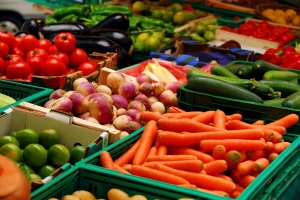
With our hectic lives, it’s never easy to squeeze in all of those servings of fruits and vegetables, but getting balanced whole food nutrition is vital for optimal health!
Diets high in fruits and vegetables have been shown to reduce the risk of obesity and some chronic health diseases such as cardiovascular disease, cancer, and diabetes. Are you missing out on the health benefits of a nutritionally-rich diet?
It’s easy to increase your daily consumption of nutritious whole foods with our amazing Green Garden formula.
If you are looking for a raw vegetable blend to super-charge your diet look no further!
One of the best parts about Frequency Foods Green Garden Formula is that it comes in both powder & capsules!
There are quite a few Greens on the market – yet it is hard to find them in Capsule form for those who prefer it – especially kids!
Another reason you should choose Green Garden from Frequency Foods….
Green Garden contains NO fillers, flowing agents (many manufacturers use talcum powder…ugh!), and absolutely no synthetic additives or preservatives. All the raw materials used in Green Garden are analyzed for purity and vitality before AND AFTER manufacturing. The product quality is unsurpassed!
Why Not Give it a try – see how you feel!
To Your Health!
